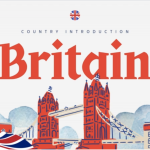Imran Hussain
Nestled along the south-eastern coast of the Republic of Cyprus lay the two cities of Larnaca and Limassol. These two fast developing tourist hotspots are the focus for many wealthy Arab nationals looking to invest in areas that show promising economic futures.
Larnaca
Larnaca is the third-largest city in Cyprus, after Nicosia and Limassol, with an urban population of 84,591 (as of 2011). The town’s lengthy history dates back as far as 13BC which gives it a claim to being the oldest coastal conurbation in the country. Despite being plagued by earthquakes in early 300AD, the city has since developed into a picturesque dwelling, boasting historical architecture alongside a sprawling strip of modern hotels and restaurants that run adjacent to the warm sands and swaying palm trees that look out onto the sparkling blue of the Eastern Mediterranean sea.
One of the must-see attractions in Larnaca is the Church of St. Lazarus. Built in the late-9th century, and claimed to be built around the tomb of the biblical figure Lazarus, brother of Mary, whom the bible states Jesus raised from the dead, it is both visually stunning and historically captivating. Alternatively, for those seeking a more family friendly outing, the WOW Action Park is the largest play centre in the city and is guaranteed to keep young children entertained whilst adults can enjoy free WIFI, sports channels and a wide variety of food and drink. Finally, for those just looking for a place to relax and recharge in the Mediterranean sunshine, the beaches are the perfect resting ground with plenty of room to lay and let the mind wander.
These features all lead to Larnaca being a natural tourist attraction for those seeking a relaxing seaside vacation, with over three quarters of the city’s income deriving from service industries, particularly tourism, with many travel related companies choosing to position their head offices there. In fact, one major attraction for tourists visiting Larnaca are the extravagant festivals the city often hosts, including the much feted Kataklysmos, or Festival of Food, which lasts for nearly 3 weeks.
Despite the setting encouraging rest and relaxation amongst its visitors, the city’s economy is not quite so dormant. Due to the loss of the Port of Famagusta in 1975, which handled 80% of general cargo, and the closure of Nicosia International Airport, Larnaca’s airport and seaport have seen an increased importance, resulting in EUR 650 million worth of investment to upgrade the airport’s facilities being completed.
Limassol
Limassol is the second-largest city in Cyprus and boasts an urban population of 160,000 – 176,700. Like Larnaca, it is a much loved destination for tourists, with various festivals and other forms of entertainment to keep visitors occupied. There are a multitude of appealing destinations to visit, such as museums, public gardens and even medieval castles. The city’s income from tourism has led to a construction boom, including the redesign of the kilometre-long promenade. European programmes have also led to improved highway flyovers and roundabouts for smoother and more convenient transportation around the city.
Limassol is particularly in demand by ship management companies due to the Cyprus Shipping Tax System, which means many shipping companies choose to locate their head offices in the city. It also hosts the bi-annual Maritime Cyprus Shipping Conference, which is very popular in the industry and always well attended. It also has two shipping ports, referred to as the “old” and the “new”, with the new port being the largest in Cyprus and that with the greatest commercial and passenger flow of traffic. Exports of grapes, wines, carobs, citrus fruits and imports of cereals, vehicles, machines, textiles, agricultural medicines, fertilizers, iron etc. pass through these ports.
The mixture of Larnaca’s tourism-centred entertainment and thriving industrial centre makes it the perfect place for investors who are looking for prospective areas to target. The trade markets are gathered in the centre of the town and in the tourist area along the coast that begins from the old harbour and ends in the Amathus district. Most of the hotels, restaurants, confectioneries, discos and places of entertainment in general, are to be found in this area.
Limassol and Larnaca both present highly palatable climates and cultures, along with great industrial facets, providing investors with a rich and fervent part of the country to invest in.





